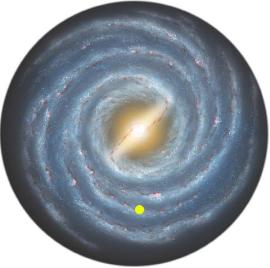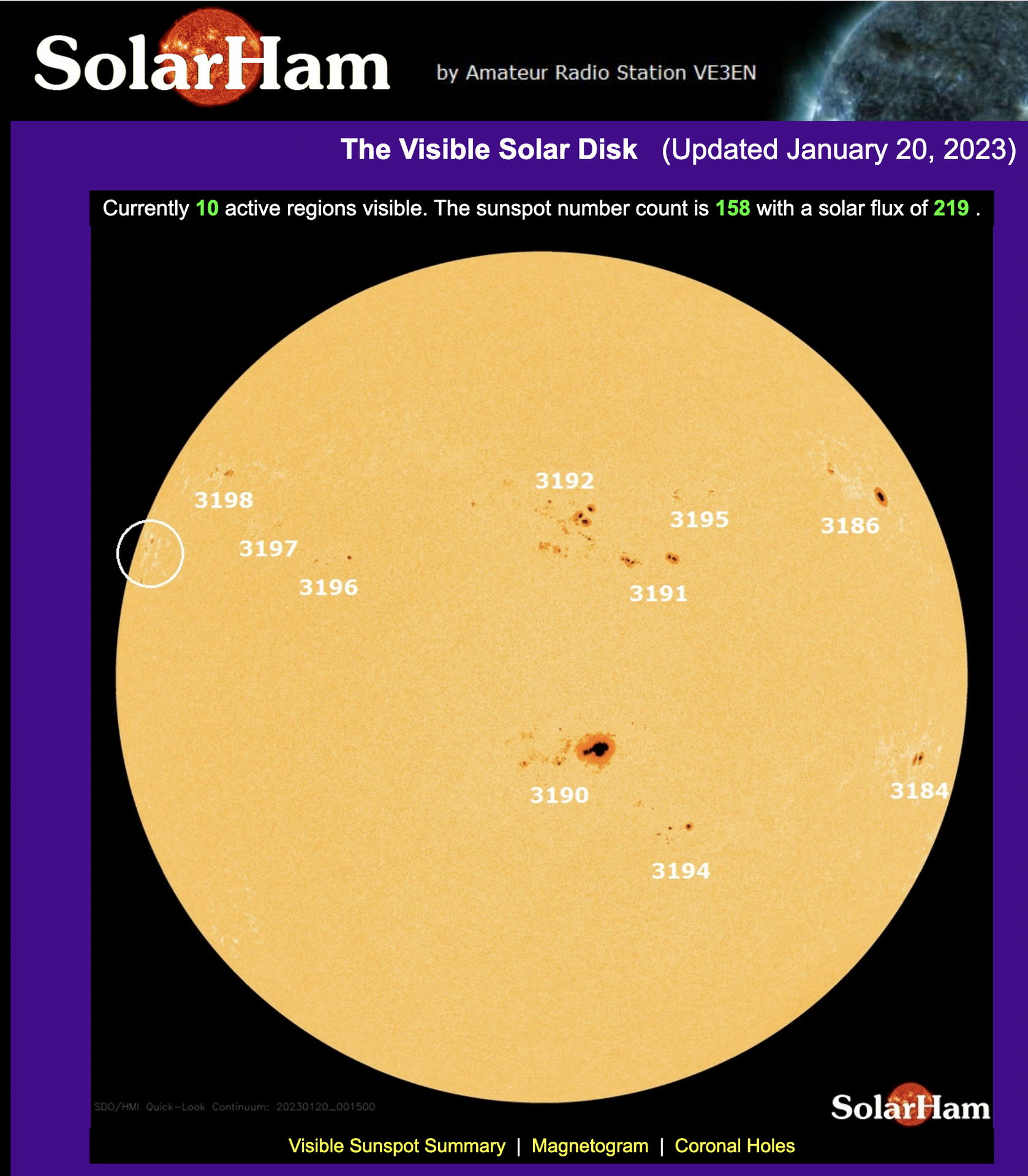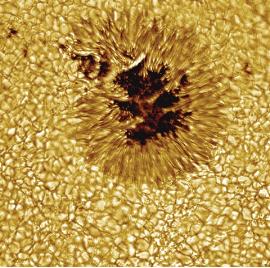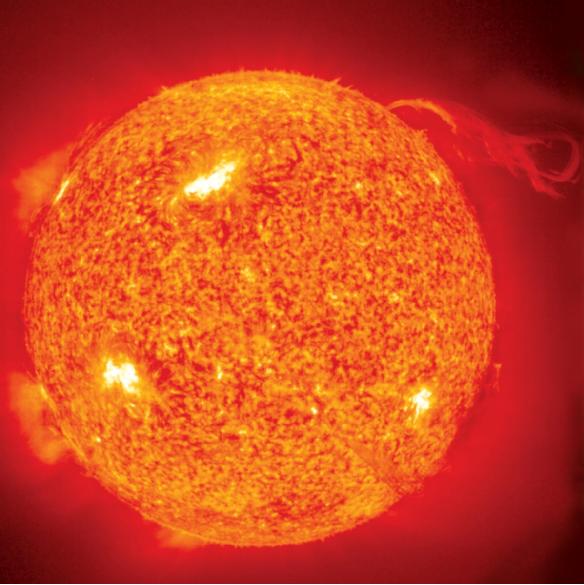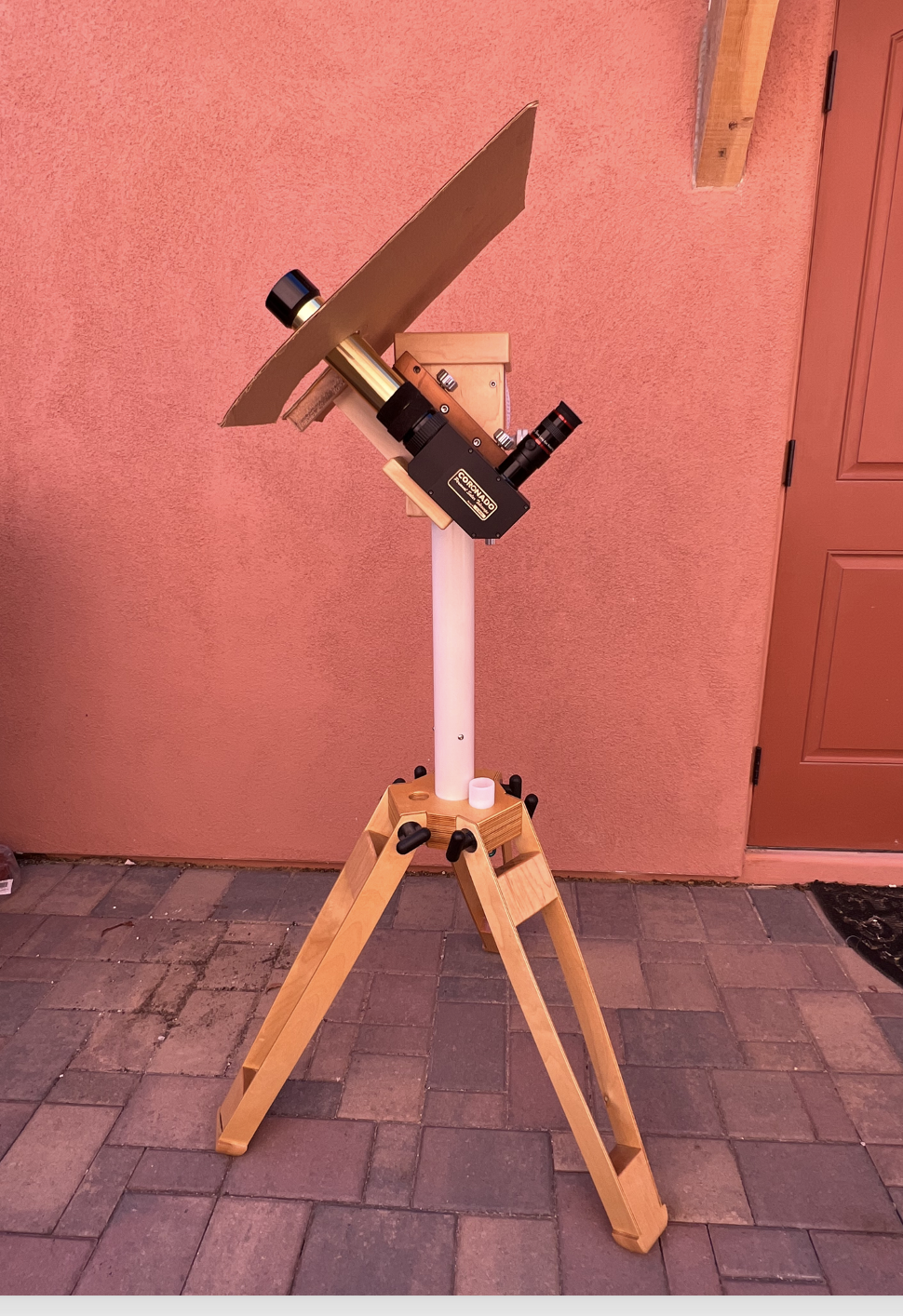The Sun
How often do we stop and think of the Sun when we think of the day? I think we take our days and nights for granted because they are natural, automatic cycles, like breathing. And, more importantly, how often do we think of the Sun when we think of life on Earth? The energy from the Sun is the reason that life developed and is sustained on Earth.
Although the Sun is special to us, it is like all the other stars in the sky. Stars are created in a simple and natural process. They are the most common celestial object in the Universe. And, galaxies represent their abodes, where these fiery balls are congregated, where they are born, live and die.
Nuclear Fusion and the Sun’s Life
Our Sun is a typical or average star. Like all stars, its energy comes from nuclear fusion. Four hydrogen atoms are fused (forced) together to create one helium atom in the core of the Sun. The mass of the resulting helium atom is 1% less than the total mass of the four hydrogen atoms. The 1% difference in mass produces the energy that we see as the blazing Sun. About five million tons of matter are converted into energy every second in the core of the Sun. Fusion in the Sun is triggered by the tremendous pressure at the core, brought about by the sheer mass of the Sun. The Sun does not collapse upon itself because of the outward expansive pressure of the generated energy.
The Sun is about 4.6 billon years old and will last for another 5.5 billion years. Toward the end of its life, it will become a red giant with an outer atmosphere extending to about the orbit of Mercury. During its final days, the Sun will shed its outer layers in one final heave. Outwardly, this heave will produce a planetary nebula while the core shrinks inward to become a white dwarf, an object no bigger than the Earth but with significantly more mass and a high surface temperature.
Structure of the Sun
Interior
Nuclear fusion occurs in the interior core where the temperature reaches 27,000,000° F. Outside the core is a radiative zone where a process of energy absorption and re-emission takes place. This zone transfers energy from the core to the convection zone that lies below the visible surface. The convection zone has huge circulating currents that transfer the energy from the radiative zone to the surface. It takes about 200,000 years for light to make its way from the core to the surface.
Surface
The visible surface, called the photosphere, is composed of a lattice of cells, each about the size of Texas, called granules. Granules are the tops of the convection currents that bring the energy from the convection zone to the surface.
Sunspots are visible on the photosphere and are associated with strong magnetic fields that restrict the convection currents, creating cooler areas that appear darker against the brighter photosphere. Sunspots are about 6,300° F compared to an average surface temperature of 10,000° F.
Immediately above the photosphere is a thin layer of gases about 2,000 miles thick called the chromosphere. The temperature there ranges from just 7,600° F near the photosphere to 14,800° F at its outer edge.
Beyond the chromosphere is the corona, the most tenuous part of the Sun’s atmosphere. This rarified hydrogen gas reaches temperatures of up to 1,800,000° F and extends for millions of miles from the surface. The corona is visible during total solar eclipses as the irregular halo surrounding the Moon.
Prominences (as pictured in the 4th middle picture from the top) are massive protrusions of ionized gas carried from the surface of the Sun into the corona. They usually protrude outward but sometimes loop back to the surface. Large prominences easily extend 10 to 30 Earth diameters from the photosphere.
A flare is like a prominence but releases enormous amounts of energy and energetic particles into the Solar System, causing the aurorae on Earth as well as radio and communication disruptions.
The Sun produces a solar wind made of highly ionized gas that permeates the Solar System. This gas can reach speeds up to 435 miles per second with a density varying from 160 to 1,600 particles per cubic inch. Additionally, sunlight itself exerts a small amount of pressure. Both the solar wind and radiating sunlight are responsible for pushing a comet’s tail away from the Sun.

